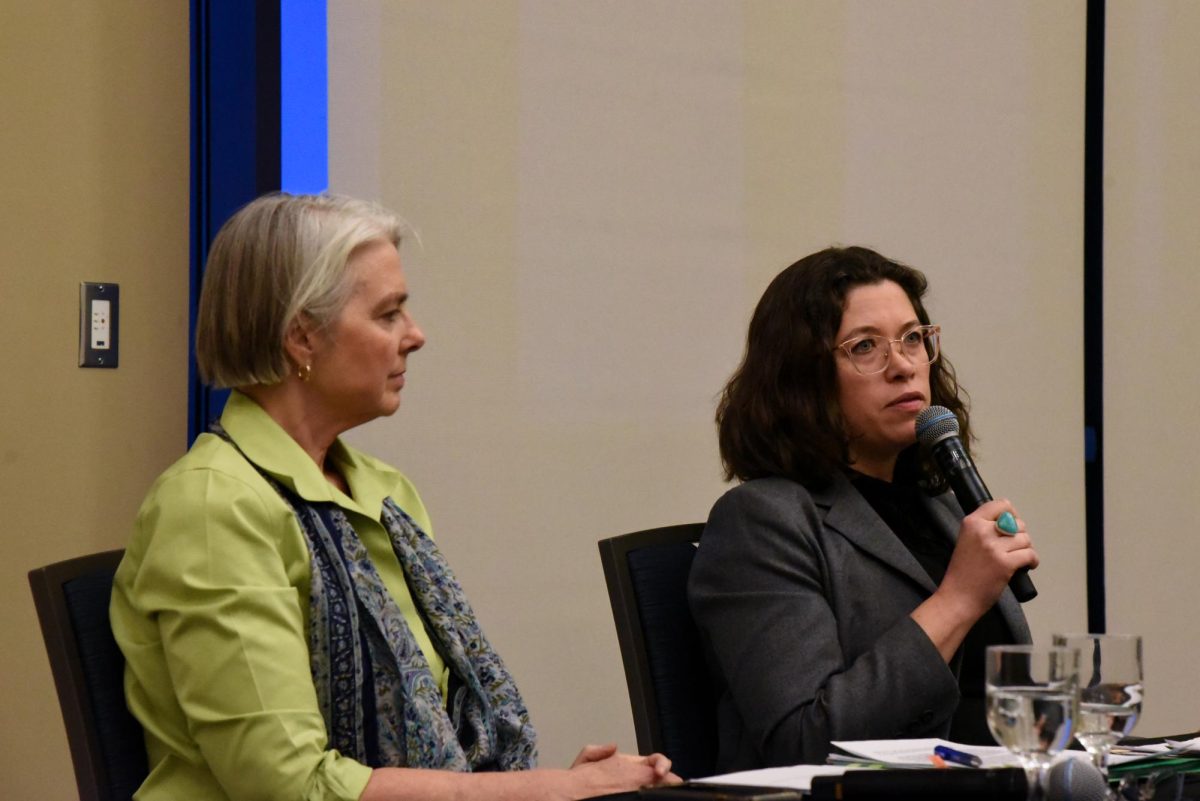Located on the second floor of Williams Hall is the Colburn Gallery, a small space reserved for student artwork and faculty-chosen exhibitions. On display now is the work of renowned ceramicist Toshiko Takaezu. All of the pieces in the exhibition come from the private collection of ceramics instructor Hoyt Berringer, who apprenticed with Takaezu early in his career. The Hawaiian-born Takaezu has taught at Princeton and has shown work in such galleries as the Metropolitan Museum of Art in New York and the Smithsonian Institution in Washington, D.C. This exhibition presents a unique opportunity for students to appreciate ceramic objects d’art.However, walking into the new ceramic sculpture exhibit, “Toshiko Takaezu: Strength in Serenity” can be quite puzzling to the uninitiated in the language of ceramic art. To visitors who arrive at the exhibit only to see clay pots that have no possibility of holding anything, it may not be apparent that, according to Professor Steve Carter, there is “intent behind it all,” he said.Carter explains, “Pots can exist as art forms, period. You don’t have to put anything in them.”Upon examining the ceramics on display, with the understanding that their function is as objects of art and art alone, people without knowledge of ceramics or sculpture basics may still question why Toshiko Takaezu is known as one of the top ten living ceramicists today, as mentioned by Carter in his talk at the opening of the show.Known for her extremely large, weighty pieces and free use of splattered and dripped glaze, Takaezu is identified with the abstract expressionist movement. Despite this, her work has less to do with, say, the frantic line quality of Jackson Pollock and has more in common with the staid Zen of Mark Rothko.The pieces in the “Strength in Serenity” exhibit are much smaller pieces than her normal fare, but show to even the most artistically challenged viewers, the meditative energy that each pot conveys. Each color or drip of glaze is intentional and serves a purpose. Described as a “master glazer” by Professor Carter, Takaezu is constantly experimenting with different methods of firing and glazing. One piece, on the far left wall was subjected to a harsh style of firing which leaves the surface texture of the pot abraded and charred. Comparing this to the delicately glazed and fired pieces on the right side of the space, some of which may resemble landscapes, any visitor can get a great sense of the possibilities of ceramic art.By understanding the motivation and creative energy behind Toshiko Takaezu’s work, visitors can appreciate the excitement that the ceramics professors and curators of this exhibit have for these pots.CLAY TERMINOLOGYGlaze: the application of a glassy substance to clay during firing to color, decorate or structurally strengthen the clay.Firing: The process by which clay becomes pottery. Heat causes certain chemical changes to occur that alter the substance permanently, most often occurring in a kiln.Kiln: A large oven that produces extremely high temperatures.Zen: A Chinese and Japanese form of Buddhism that dates from the seventh century CE that emphasizes experiential awakening over the study of religious texts, or theoretical knowledge.Expressionism: An artistic movement that favored emotional content above faithful representations of reality. Some famous expressionists include Edvard Munch and Vincent van Gogh. Definitions courtesy of ASTM International












